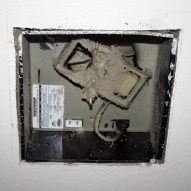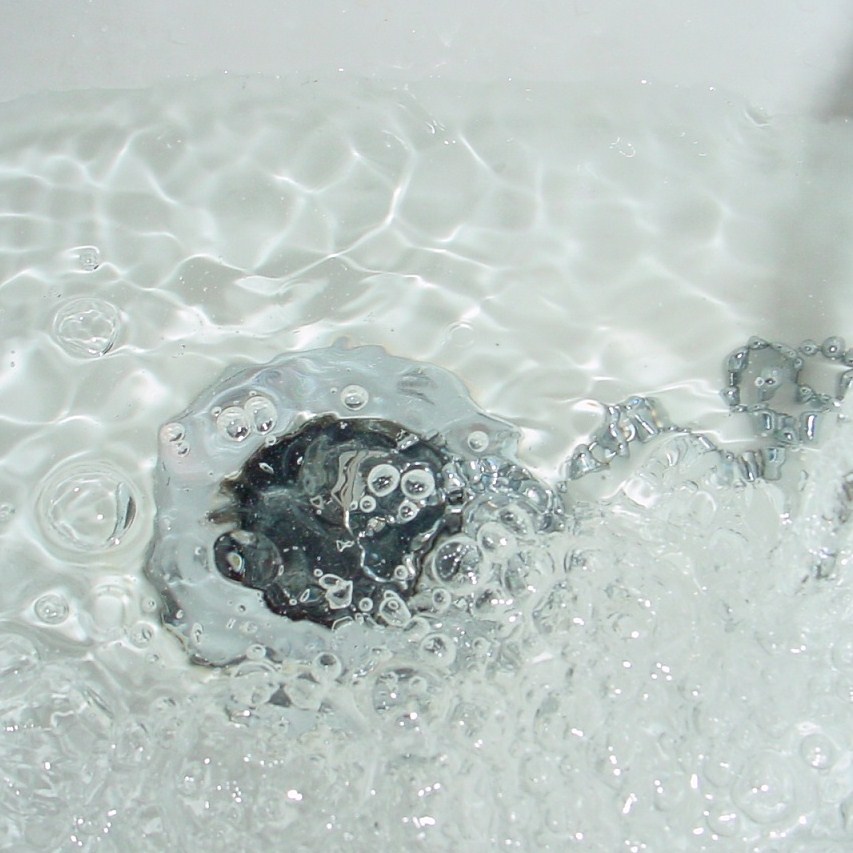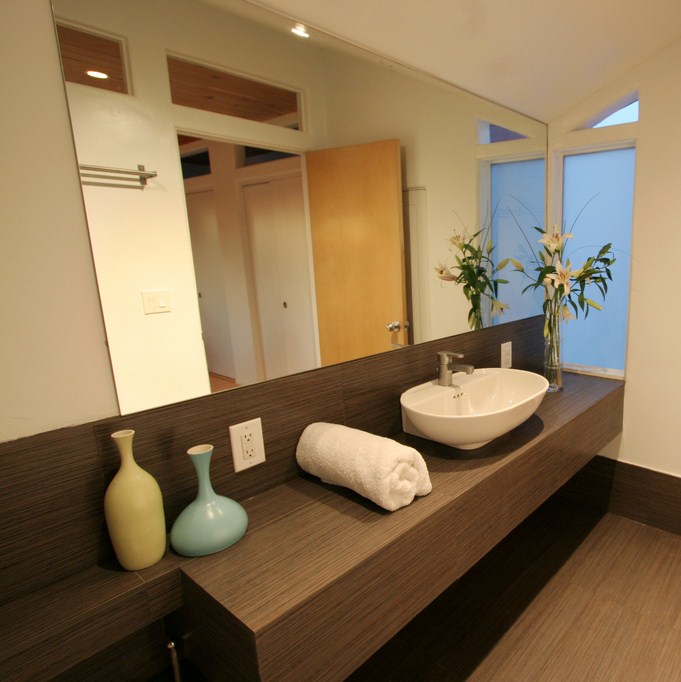Maintenance Tips: Toilets
When you consider the lifespan of most fixtures and appliances around the home, toilets rank near the top. According to the Study of Life Expectancy of Home Components which was prepared in 2007 by the National Association of Home Builders (NAHB), "Toilets have an unlimited lifespan, but the components inside the toilet tank do require some maintenance."
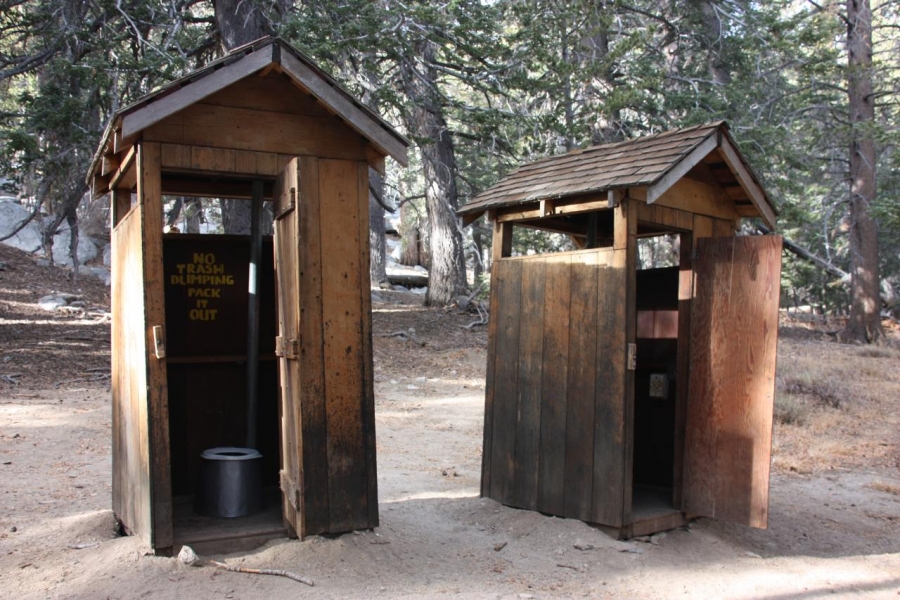 Credit: Flickr | chiropractic | CC BY-SA 2.0
Credit: Flickr | chiropractic | CC BY-SA 2.0
Components
Bathroom Maintenance Tips
Maintenance Tips: Bathroom Exhaust Fans
Maintenance Tips: Bathtubs and Showers
Maintenance Tips: Bathroom Vanities
Today's toilets are typically a two piece (tank and bowl) plumbing fixture made out of vitreous china. The mechanical components, which are located inside the tank, work together as a system to perform a gravity flush. This common type of assembly is known as the flush valve flapper design. As the diagram below illustrates, components include a (1) float, (2) fill valve, (3) lift arm, (4) tank fill tube, (5) bowl fill tube, (6) flush valve flapper, (7) overflow, (8) flush handle, (9) chain, (10) water level, (11) fill valve shaft, and (12) flush tube.
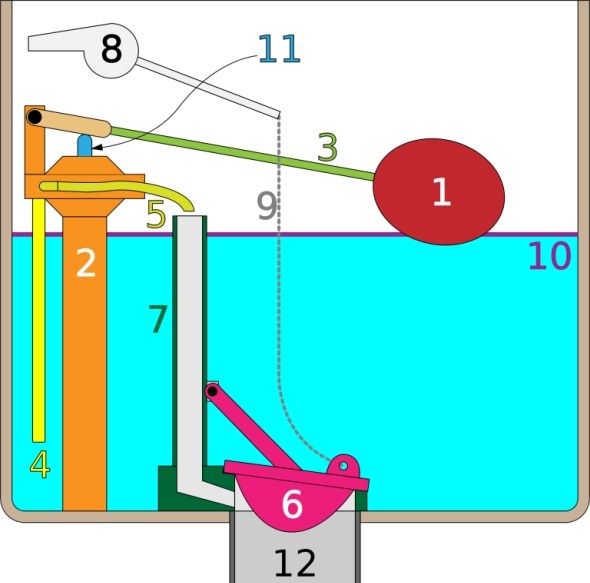
When initiated by a flip of the handle, the assembly of parts acts together to force water out of the tank, through the flush tube, and into the bowl, rinsing its contents through the siphon and down the drain. It's a rather simple mechanical assembly and in fact not at all difficult to clean and maintain, as long as you do so on a regular basis.
Cleaning
Vitreous china has a glossy appearance that is available in many colors. While the material is strong, care should be taken to not strike the surface or roughly handle the connections, because vitreous china can scratch, chip, and even crack. Cleaning the inside of a toilet bowl should be done at least once a week. Using a brush and either a toilet bowl cleaner or household bleach, the inside of the bowl should be thoroughly scrubbed. Be sure not to use an abrasive cleaner as it will wear down the glossy finish over time. You should also disinfect the toilet bowl, seat, lid, tank, and handle surfaces with a disinfectant spray throughout the week. It is a good idea to keep the area around a toilet, and on top of the tank, free and clear of any belongings. This will ensure your ability to easily find the water shut off valve if it is needed in an emergency, and allow you to remove the tank's lid to inspect inside the tank and make any necessary adjustments or repairs.
Leaks
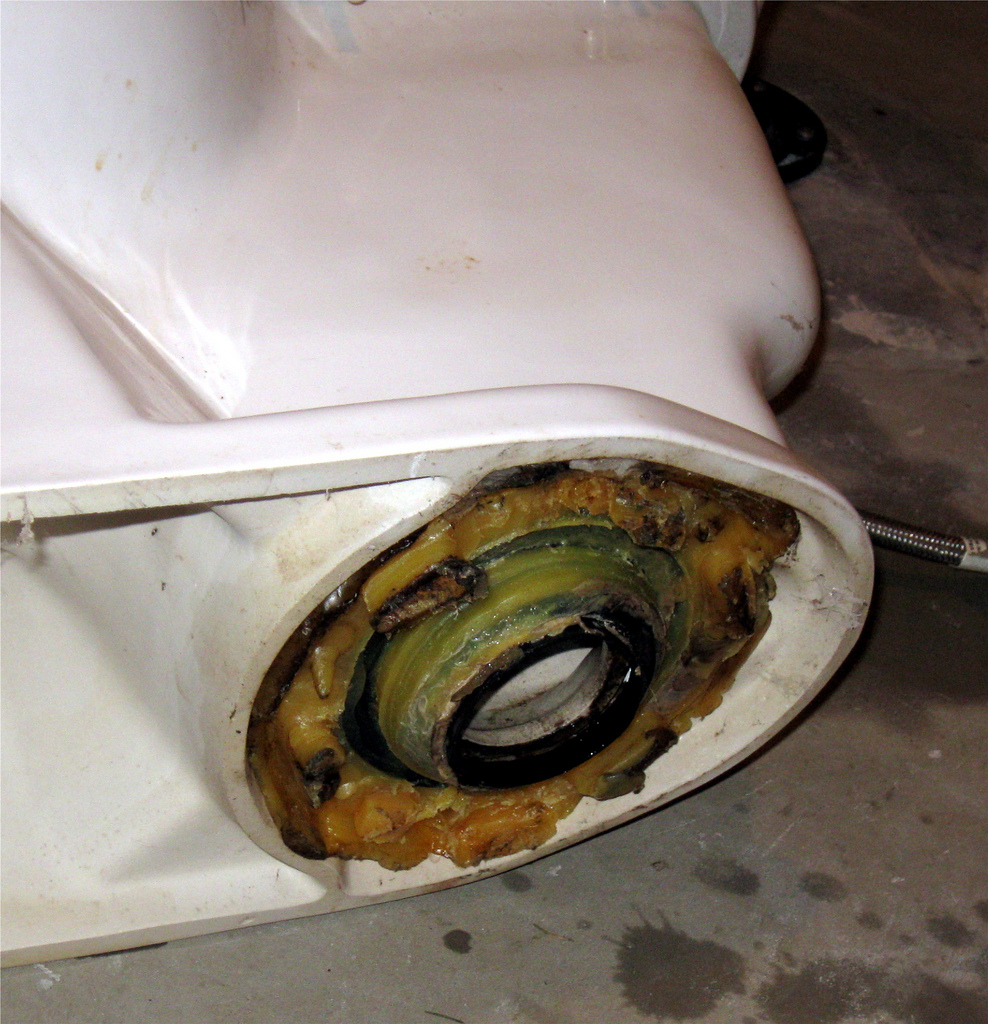 While you are cleaning the toilet, it is a good practice to inspect it for signs of external leakage along the floor, and around the tank and bowl. If leaks are present outside of the tank, make any necessary repairs. The bowl is joined to a floor flange with a wax ring or gasket that is used to seal the connection and prevent waste and odor leakage. Over time, the wax ring can deteriorate and allow seepage to occur around the base of a toilet. Depending on the toilet's use, you might expect to replace the wax ring every 5 to 10 years, although in some cases they can last much longer. It is vital to the floor and structure below that this type of leak be repaired immediately and the wax ring replaced.
While you are cleaning the toilet, it is a good practice to inspect it for signs of external leakage along the floor, and around the tank and bowl. If leaks are present outside of the tank, make any necessary repairs. The bowl is joined to a floor flange with a wax ring or gasket that is used to seal the connection and prevent waste and odor leakage. Over time, the wax ring can deteriorate and allow seepage to occur around the base of a toilet. Depending on the toilet's use, you might expect to replace the wax ring every 5 to 10 years, although in some cases they can last much longer. It is vital to the floor and structure below that this type of leak be repaired immediately and the wax ring replaced.
A toilet should not move; it should be securely fastened to the floor. If you detect a wobble, determine what is causing the problem. It may be a loose floor nut, or the toilet may be improperly seated over the wax ring. Whatever the cause, you should make any necessary adjustments and ensure that the toilet is securely fastened. Check the condition of the caulk around the base of the toilet bowl where it meets the floor. The caulk should be in good condition and adequately seal the seam. If necessary, remove any deteriorated caulk and apply new caulk around the bottom edge of the toilet bowl.
Other Common Problems
From time to time your toilet may experience different types of operating issues, such as internal running water leaks, slow flushes, a clogged drain, or broken components. If you experience a clogged drain, you may want to consider what caused the clog. To ensure that your toilet, drain, and sewer pipes function as expected, it is good practice not to flush foreign objects down the drain. Clogs can be removed using any number of techniques or methods. Clogs are most commonly removed by using a toilet plunger or a wire hanger, or snaking through an obstruction in the drain. Other methods may be required depending on the circumstances that have caused the stoppage.
If a toilet is slow to flush, the water stored in the tank may not be filling up to the appropriate level, or the rinse holes located on the underside of the toilet bowl lip may be clogged. Open the tank lid and determine if the water level is located near or just underneath the overflow pipe. If it is too low, the float may not be working properly to allow water to enter the tank. If the water level seems appropriate inside the tank, you'll want to check the rinse holes and clean any buildup that is limiting the flow of water. Using an inspection mirror and wire hanger, probe the rinse holes to remove surface buildup. Temporarily dam the rinse holes and add lime remover to the overflow drain inside the tank. This will direct the lime remover towards the rinse holes and dissolve any mineral buildup. Remove the dam at the rinse holes after 8-12 hours and use as normal.
"Toilets have an unlimited lifespan, but the components inside the toilet do require some maintenance." National Association of Home Builders (NAHB)
If you hear running water at a toilet that no one has used, you are wasting money -- it's literally going down your drain. If you suspect that there is an internal leak but can't hear one, add a little dark liquid food dye to the water stored in the tank. If after 15 - 30 minutes you see the same dye color in the bowl even though you have not flushed the toilet, you know water is leaking from the tank to the bowl. Running water is an internal leak that is typically caused by a mechanical component inside the tank that needs adjustment, or is damaged or deteriorated. These components are readily available at your local hardware or home improvement store and are rather simple to replace. Keep in mind that prior to doing any type of work on a toilet, you want to shut off the water supply valve, located near the toilet.
Following these maintenance ideas will keep your toilet sanitary and properly functioning for years to come.

Buildipedia Staff
The Buildipedia research and writing staff consists of dozens of experienced professionals from many sectors of the industry, including architects, designers, contractors, and engineers.
Website: buildipedia.com/
